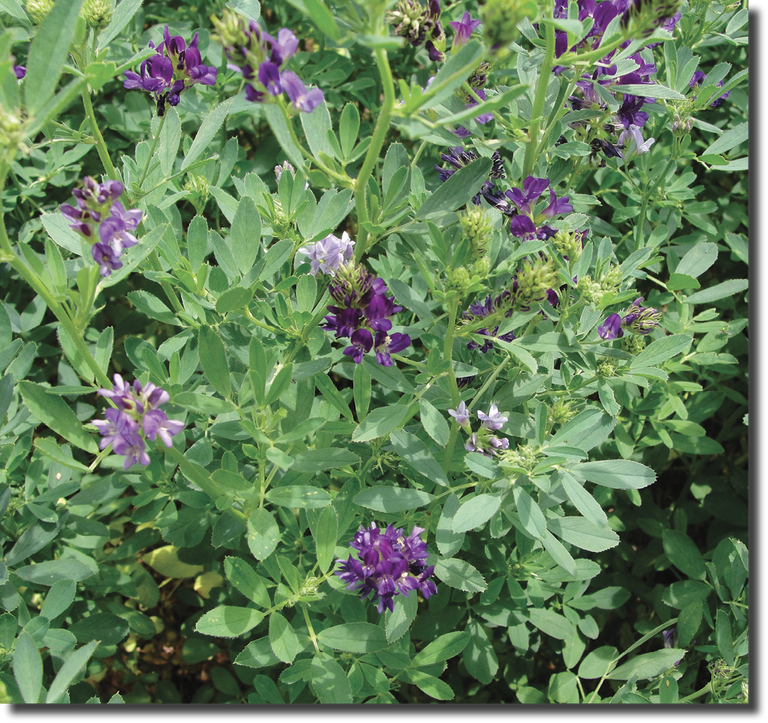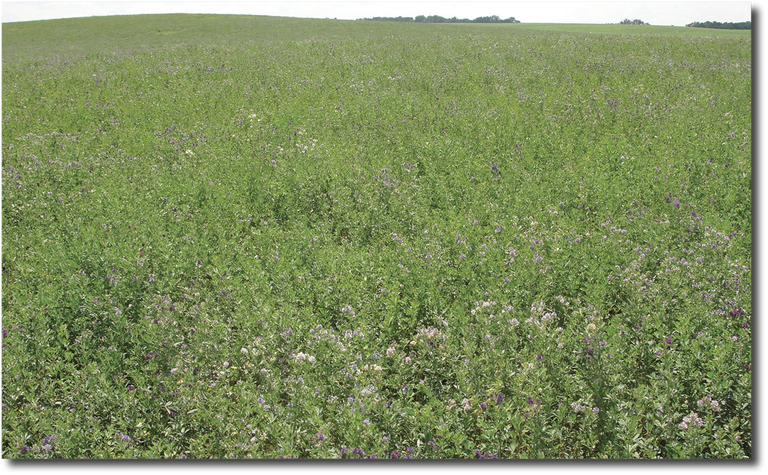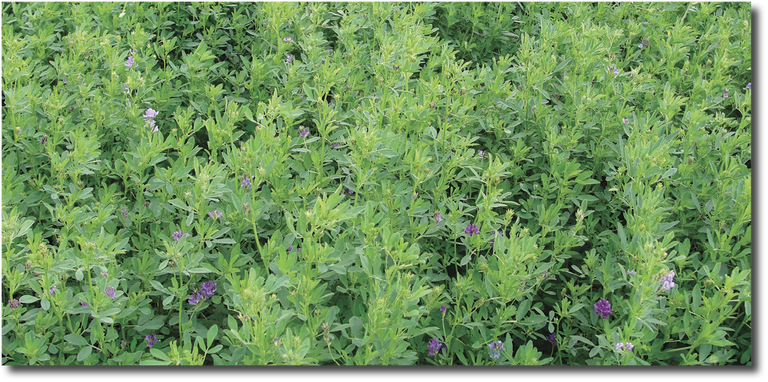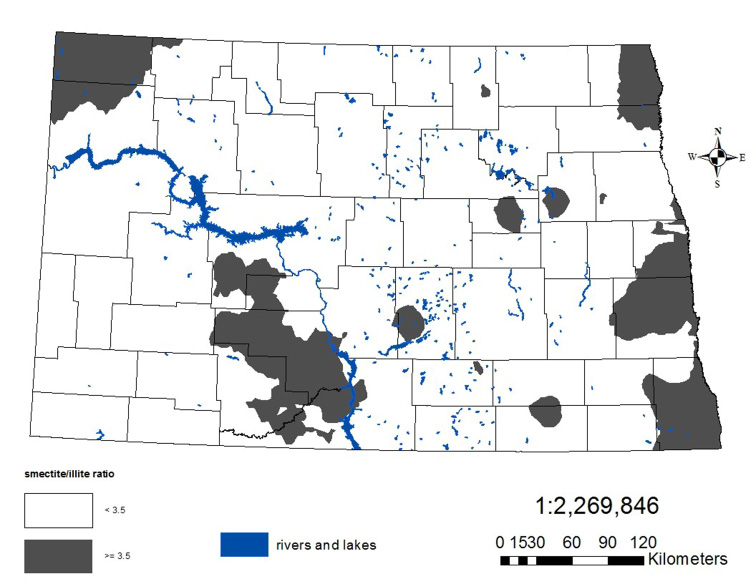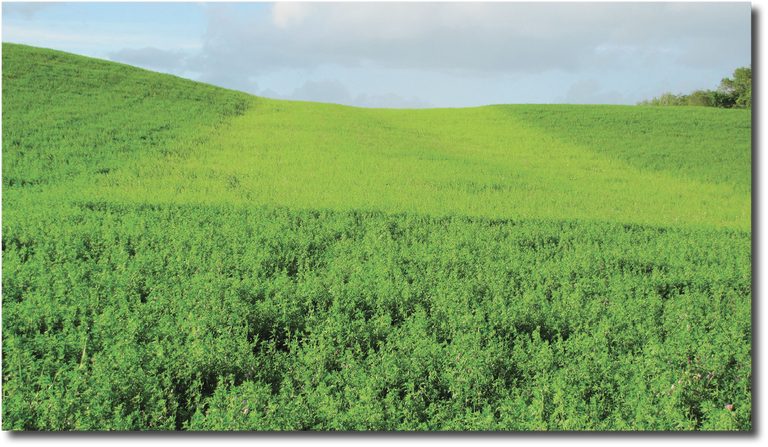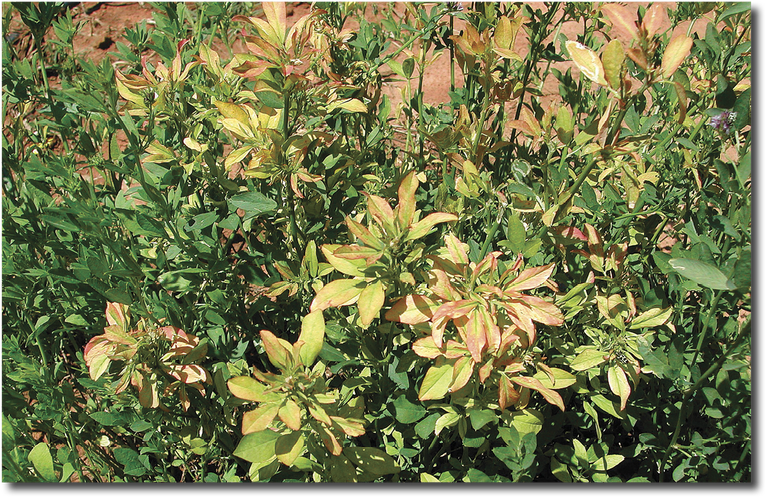Alfalfa is a high user of potassium (K). The application of K should be related to soil test level, clay chemistry and alfalfa tonnage removed the previous season. Initial K level should dictate pre-seeding K application.
The soil cation exchange capacity (CEC) also will be useful to determine the initial K application rate that the soil would support. Unfortunately, the CEC test utilized by most soil testing labs in the region will overestimate CEC due to the influence of free Ca/magnesium (Mg) carbonates that will be solubilized during the testing procedure and the presence of soluble salts that will be in the testing solution from most of our soils.
The following table contains estimates of CEC from contribution of our dominant clay chemistries and organic matter to CEC in North Dakota.
Table 4. Estimated CEC based on soil texture and organic matter in North Dakota.
|
Soil Texture
|
Organic Matter
Percent
|
Estimated
CEC
|
|
Loamy sand
|
2
|
4
|
|
Sandy loam
|
2
|
6
|
|
Sandy loam
|
4
|
10
|
|
Loam
|
2
|
10
|
|
Loam
|
4
|
12
|
|
Silt loam
|
4
|
15
|
|
Clay loam
|
4
|
17
|
|
Silty clay loam
|
4
|
20
|
|
Clay
|
4
|
22
|
With soil having CEC less than 10, increasing the soil test K level (dry-based soil test K, 1-M ammonium acetate extraction) to more than 100 ppm will not be possible.
Recent research in North Dakota found that the critical level of soil test K required was related to the ratio of smectite-chemistry clay to illite-chemistry clay. North Dakota has been mapped very recently for the smectite-to-illite ratio in major soil groups in each county (Figure 1).
Figure 1. Smectite-to-illite ratios of the soil clay fraction of soil minerals. Dark gray delineates soils with ratios greater 3.5, and white areas have ratios less than 3.5.
Soils with a smectite-to-illite ratio greater than 3.5 draw some soil solution K back into the clay interlayers when the soil is dry, rendering it unavailable to crops until the soil becomes moist. Soils with a smectite-to-illite ratio less than 3.5 provide K to crops whether the soil is moist or dry.
Using this information, the critical K soil test level for alfalfa in soils with a smectite-to-illite ratio greater than 3.5 would be 200 ppm. For soils in North Dakota with a smectite-to-illite ratio less than 3.5, a critical level of 150 ppm should be used. If the soil test K levels are above the critical K level, K fertilizer need not be applied.
If the soil test K level is at or below the critical level, then supplemental K application will be important to maintain stand and high yield for a given environment. Early spring K release from soil minerals will sustain the alfalfa crop through the first harvest, but after the first harvest, K application based on removal by the previous year’s yields will be essential to maintaining stand and productivity.
One ton of alfalfa removes about 50 pounds K2O per acre. Therefore, the calculation to guide K application after establishment is:
Tons alfalfa removed previous year
X 80 pounds per acre of 0-0-60
= Rate of 0-0-60 after first cutting
For example, the recommended rate of 0-0-60 after the first cutting in a year preceded by removal of 4 tons per acre alfalfa would be 4 tons X 80 pounds per acre of 0-0-60/ton, or 320 pounds per acre of 0-0-60. Alfalfa takes up surface application of K very efficiently.
The recommended rates of K2O to be applied at or before alfalfa establishment are indicated in Tables 5 and 6. Note that at K soil tests in excess of 150 and 200, depending on the smectite-to-illite ratio of the soil clay, 60 pounds per acre K2O still is recommended for improved winter survivability. Rates greater than 60 pounds per acre of K2O should be split, with 60 pounds per acre K2O applied in the fall, and the remainder applied after first cutting.
Table 5. Potassium recommended at alfalfa establishment in soils with a smectite-to-illite clay ratio greater than 3.5 for broadcast application rates of K2O (see Figure 1).
|
K soil test, ppm
|
|
0-50
|
51-100*
|
101-150
|
150-200
|
200+
|
|
Rate K2O, pounds per acre
|
|
180
|
150
|
120
|
90
|
60
|
* Soils with estimated CEC (Table 2) of 10 or less, apply 90 pounds of
0-0-60 per acre at establishment regardless of soil test. |
Table 6. Potassium recommended at alfalfa establishment in soils with a smectite-to-illite clay ratio less than 3.5 for broadcast application rates of K2O (See Figure 1).
|
K soil test, ppm
|
|
0-50
|
51-100*
|
101-150
|
150+
|
|
Rate K2O, pounds per acre
|
|
150
|
120
|
90
|
60
|
* Soils with estimated CEC (Table 2) of 10 or less, apply 90 pounds of
0-0-60 per acre at establishment regardless of soil test. |
Alfalfa takes up potassium in concentrations greater than the physiological requirements for K if soil K availability is high. Excessive K in forage can be detrimental to livestock. Forage testing is the most effective method to ensure animal nutrient requirements are being met and not exceeded in a feeding program. Laboratory analysis is the recommend method to determine forage nutrient content and forage value.
